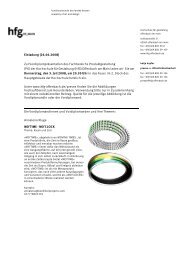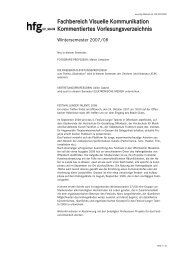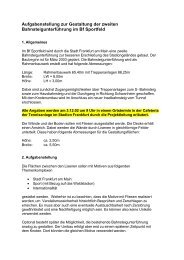User Manual
User Manual
User Manual
Create successful ePaper yourself
Turn your PDF publications into a flip-book with our unique Google optimized e-Paper software.
Glossary of Terms<br />
For the sake of clarity, here are short and simple explanations of several<br />
terms, items and features mentioned in the manual that may be unfamiliar<br />
to some.<br />
Bracketing<br />
The practice of making extra exposures over or under (normally<br />
both) the ‘standard’ exposure to ensure the desired result. This is<br />
particularly useful in difficult, wide-ranging lighting conditions.<br />
Easily set and controlled with the H3D II.<br />
Custom setting<br />
The setting chosen by the user that differs from the default setting.<br />
Click / Press – On.Off button<br />
The ON.OFF button can be depressed in two different ways which<br />
in turn cause different results. This distinction is referred to in the<br />
text as clicking and pressing. Clicking is a very rapid depressing<br />
of the button with immediate release whereas pressing is a longer<br />
depression of the button with maintained pressure.<br />
EV<br />
Exposure Value. It represents the standard photographic notation<br />
within exposure control. For example, if you change the aperture<br />
on a lens from f/11 to f/8, you will increase the exposure by 1EV.<br />
Similarly, if you change the shutter speed from 1/15s to 1/60s you<br />
will decrease the exposure by 2EV. A change in EV can therefore<br />
represent a change in aperture, shutter speed or a mixture of both.<br />
It is a simpler and more useful way of referring to the essential<br />
effective combination when making exposure settings without<br />
referring to the implications and sometimes confusing aspects of<br />
specific shutter speeds or apertures.<br />
As a practical example, if you are using ‘exposure compensation’, the<br />
settings are in EV’s (often referred to as ‘stops’ in older descriptions)<br />
or fractions of EVs (or ‘stops’). Therefore an exposure compensation<br />
of +1EV, for example, will provide ‘one stop overexposure’<br />
and similarly an exposure compensation of -1/2EV, for example,<br />
will provide ‘ a half stop underexposure’.<br />
See the chart in this manual for cross reference of EVs and their<br />
aperture/shutter speed equivalents<br />
DAC<br />
The “Digital APO Correction” or DAC feature optimizes lens<br />
performance by automatically including lens specific metadata<br />
with every image. APO-chromatic correction is then implemented<br />
which reduces colour fringing and corrects distortion to provide<br />
the optimum performance of the lens at all settings.<br />
Default setting / factory setting<br />
A standard setting that a device is set to in the first instance during<br />
manufacture and returns to if a setting change is halted or<br />
interrupted in any way.<br />
FireWire<br />
FireWire is an interface standard that provides the rapid communication<br />
of data information between separate units. The H3D II<br />
uses Firewire to connect to an ImageBank II or computer.<br />
118<br />
Half-press / Full press – Shutter release button<br />
The shutter release button can be depressed in two different ways.<br />
This distinction is referred to in the text as half-press and full-press<br />
positions. A half-press is a rapid, soft press whereas a full-press is<br />
a firmer and longer depression of the button.<br />
IAA<br />
Instant Approval Architecture or IAA provides the user with a<br />
method of classifying images either immediately after capture or<br />
at any other time. This greatly improves workflow efficiency.<br />
LCD<br />
Liquid Crystal Display. An electronic information panel. The grip<br />
has an LCD panel.<br />
LED<br />
Light Emitting Diode. Electronic devices used in information<br />
displays. The viewfinder display has LED’s to the left and right of<br />
the integral LCD panel.<br />
Mid-grey / 18% grey<br />
An important point to be remembered is that all photographic<br />
exposure meters / light metering systems are calibrated to provide<br />
a reading that will reproduce a ‘mid-grey or 18% grey tone’ from<br />
the measured subject tone. This is an international photographic<br />
standard upon which all exposure calculations must be based. The<br />
H3D II has very accurate and sophisticated exposure measuring<br />
modes. Pre-programmed information is taken into account via the<br />
metering system when calculations are automatically made. This<br />
provides a very satisfactory compromise for a host of photographic<br />
situations and many users will certainly be very satisfied with<br />
the consistently high quality of results. Nevertheless, some situations<br />
are either so technically difficult or open to interpretation<br />
that manual intervention is advised to ensure the desired result.<br />
Naturally, many seasoned users always prefer manual control but<br />
they base their calculations and decisions on much experience.<br />
To illustrate this point, imagine the following example:<br />
Pin two sheets of paper, one black and the other white, onto a<br />
grey wall. Take three exposures using an average light reading;<br />
a close-up of the black sheet, a close-up of the white sheet, and a<br />
distance shot of the whole wall including the two sheets. Without<br />
any manipulation, the first two exposures will produce a tone that<br />
is similar to the wall, namely, a grey tone; not black or white. The<br />
third exposure, however, will reproduce the wall as a grey tone<br />
while the two respective sheets now appear as black and white<br />
respectively, as originally observed.<br />
However confusing this might at first seem, it is fundamental to<br />
mastering exposure calculations and exposure control. If you are at<br />
all unsure about this basic concept, you are strongly recommended<br />
to refer to a general photographic manual for a fuller explanation<br />
in order to obtain the maximum from your H3D.



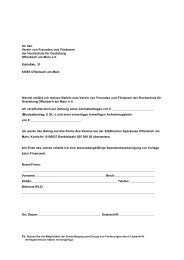
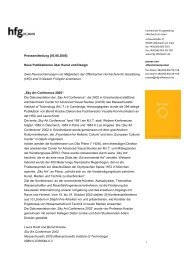


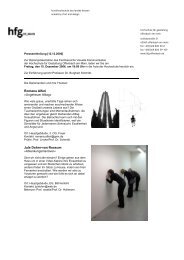

![Einladung [07.02.2006] - Hochschule für Gestaltung Offenbach am ...](https://img.yumpu.com/13375413/1/184x260/einladung-07022006-hochschule-fur-gestaltung-offenbach-am-.jpg?quality=85)

